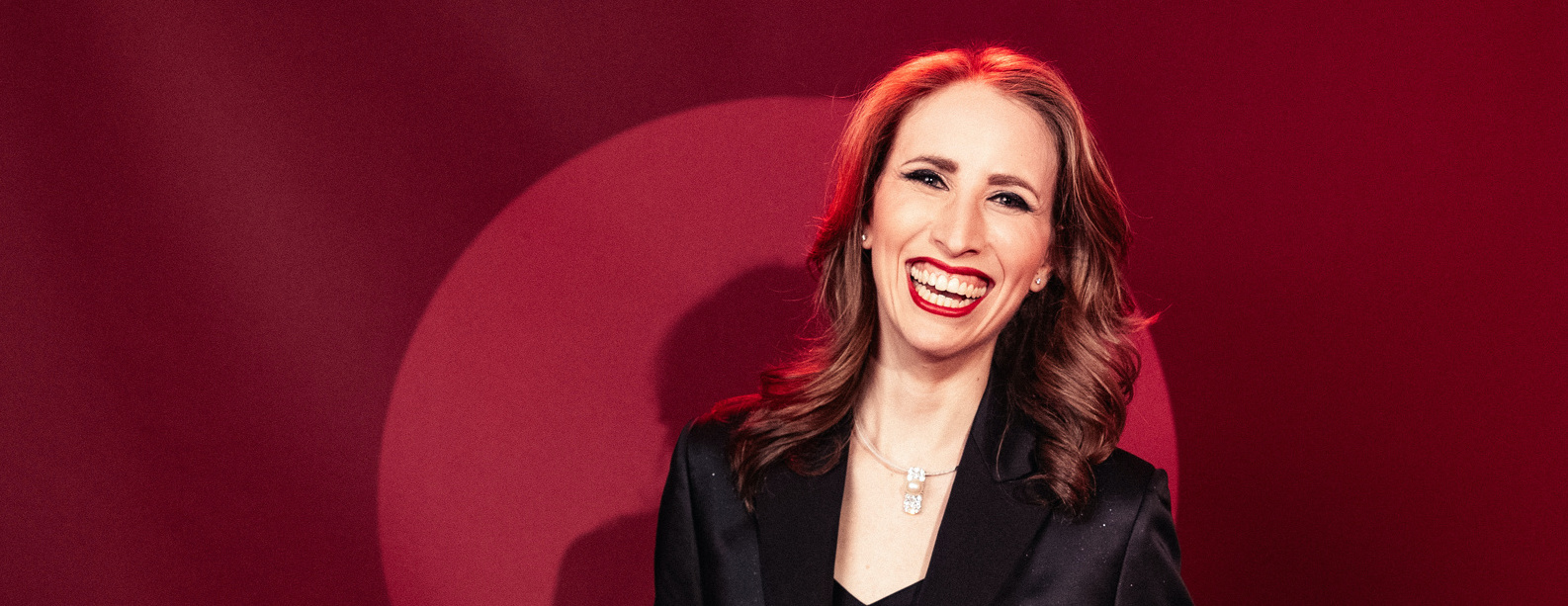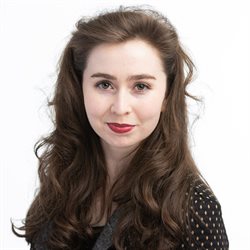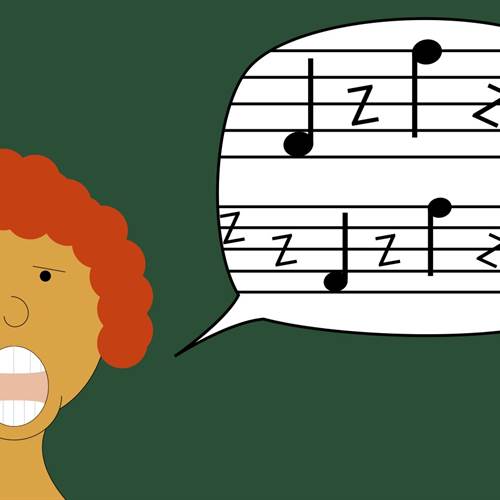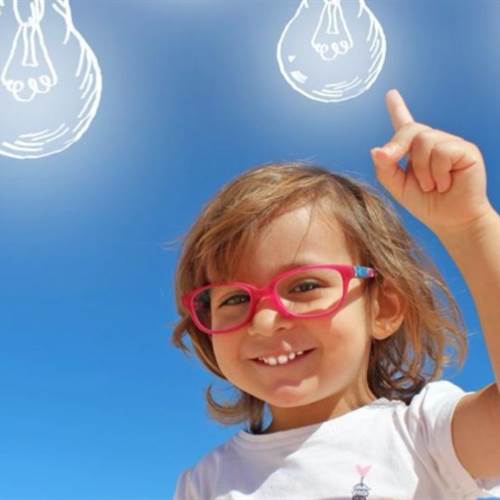
WordWaves: The Language of Music
Posted Monday, July 19th 2021 by Meredith Davis
How can so many rigid disciplines be compacted into one entity that ultimately works to free our spirits?
For information and to register for the next WordWaves workshop, please visit the following link HERE.
The musical art is riddled with method, theory and emotion. How do you separate the art from the academic and yet find a way to bring both together in a performance? Every singer struggles with this balance, finding the right ingredients in their musical discovery. If only there was a recipe!
New York Vocal Coaching is ready to let you in on a secret. There is such a recipe! And Andrea Grody is the genius prepared to tantalize your musical taste buds!
Andrea Grody is an accomplished music director, arranger, composer, and voice teacher with a focus on developing new work. She served as the Music Director, Music Supervisor, and Additional Arranger for the critically acclaimed Broadway musical The Band's Visit, which won 10 Tony Awards, including Best Musical. She is also the Music Director, Music Supervisor, and Vocal & Incidental Arranger for Tootsie, which opened on Broadway in April 2019 and won two Tony Awards.
Among all of her accomplishments, none may be more rewarding than her development of WordWaves, an innovative new form of musical language and learning.
Andrea takes us on this journey of musical discovery:
When did you discover your passion for music?
I’ve always been interested in story telling through music!
I’ve been a singer my whole life, making up stories with my brother in the car. Growing up, I started piano young plus two more instruments before the age of ten and was a choir kid.
As time went by, I became interested in musical theatre and film composing. My first dream was to be an actress, but by the time I started college that dream had evolved into becoming a film composer. After my freshman year of college, I spent the summer in Los Angeles for composition internship. But what I learned is that the day-to-day life of a film composer is very solitary there. It was a l lot of being alone with computer.
And that’s when I pivoted to musical theatre! Because I love people and human collaboration!

When did you first conceive WordWaves?
I’ve been thinking about this for a long time. I love understanding how peoples’ minds work. It’s been my favorite part of being a teacher and a music director, how someone learns and how I can guide them when they get stuck. How I can help them move around the mistake.
What does it mean when we stress a syllable on a unstressed musical beat? We don’t do that when we speak naturally.
As I’ve been pondering it over the years, I realized there wasn’t anything like WordWaves out there. As actors talk about text and musicians talk about rhythm, why was there nothing combining the two?
I once asked a drummer of mine, “Do you ever think about rhythm as having direction?” and he didn’t have an answer.
So, I decided, “Wow! I’m going to make this myself. We need this language and I’m going to find it!”
For someone new to music, what is word waves?
WordWaves is a visual musical language for singers, teachers and song writers. It enables you to connect to text, rhythm and musicality seamlessly in song.
It is a visual representation. You use WordWaves by drawing it out to create a kinesthetic experience. The literally see what is going on within the music and to heighten your musical performance experience.
To many people it is a method. I’m hesitant to call it an alternative to music notation as it doesn’t represent pitch or other musical rudimentary aspects. Hopefully, that reference can be useful to those who are unsure of how to use it.
How has WordWaves grown from its beginnings?
So, much! The first presentation last spring was more like a presentation to colleagues of an academic paper. It took several rounds of teaching for the graphics to evolve into the full state they are now.
At first, WordWaves is the rhythm of language and rhythm of music. But I’m drawing groove and feeling. It is a language for talking about the nuance of music. This is the bedrock of WordWaves; the representation of text and music.
You’d be surprised at how much more of music it can open up for you.
As a Music Director, what has it opened up for you?
WordWaves has helped me to develop the way that I’ve been teaching and working with musicians, helping me to refine my own craft.
As a teacher, whenever I say, “Think about your rhythm as going up,” now I can show them. And then, they can find it on their own. Even if the singer doesn’t understand, I can draw something quickly. I’ve had many voice lessons where I have used this that this year and without context they understand what I’m talking about!
Where do you see WordWaves going in the future?
I would love for singers to tell their character’s stories in all walks of opera and musical theatre. I’d love to apply WordWaves to not just western music but all musical genres on a global scale.
But more than that, I would love for singers to simply have access to WordWaves in academic programs. And to be a tool for those people who have trouble with music theory and traditional notation. I want those singers to know that their understanding of music is not wrong; it just takes a different direction. WordWaves opens that door of understanding of what musical theatre and music literacy truly are!
I’d also love to write a book! I’d like to put the methodology of WordWaves into written format for singer and musicians to use as resource.
I’d like to make more of WordWaves content digitally accessible as well. Music theory and literacy have lagged behind in the Internet era. But today, educational resources are easily found online and most you can access for free. I’d like for WordWaves to be just as readily available to the masses. Music itself is a casual part of our lives again, but music theory and literacy are still limited in access.
And my hope this that WordWaves can help singers make music on their own. Make them feel confidence in their knowledge of their craft.
How can singers benefit from studying WordWaves?
First, the singer will come to understand the rhythm of language and the rhythm of music and how they are different. It answers so many questions for singers who have felt confused in the past.
Second, the singer will gain concrete tools for engaging both their storytelling and musicianship at the same time. They can follow both with out sacrificing either.
We often hear directors telling singers to 'speak the song as a monologue,' but WordWaves is the way to combine text with music. Yes! Feel what you feel, keep that organic emotion, but find that emotion within the music theory.
It’s a dimension that we are missing. And being able to see it is really validating!
For information and to register for the next WordWaves workshop, please visit the following link HERE.
For more information on schedule, curriculum and tuition, please visit www.SingWordWaves.com.


Meredith Davis
Meredith is the Studio Manager at New York Vocal Coaching, as well as an experienced actor, director, and choreographer. She served as the director of Musical Theatre for the North Carolina Young Artists Program. During the summer of 2011, 2012 and 2013, NCYAP traveled internationally to Bulgaria and Italy to perform her works. She has also worked as the Assistant to the Producer of North Carolina Theatre where she maintained the daily workings of every production throughout the spring season of 2013.

Signs That You Might Be Vocally Fatigued
The voice is the only instrument that is apart the human body (unless you count clapping your hands as percussion!!). So it makes sense that the instrument is the entire body, not just the larynx alone. Everything from body alignment, respiratory system, the larynx, vocal tract, not to mention the brain are involved in this high level athletic coordination!

Am I "Cast-able"?
Before I became a professional music director, I had every intention of becoming a musical theatre performer. I studied four years at the prestigious Musical Theatre program at the University of Michigan, then, as was expected, pursued the life of an actor here in New York. But somewhere along the way, I made a turn and didn't quite end up where I'd planned...

Setting SMART Goals
We all want something in this business. But what you want is different from what your best friend might want, even if it is the very same goal.